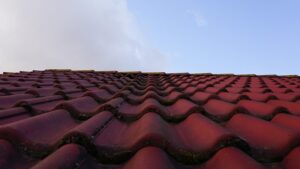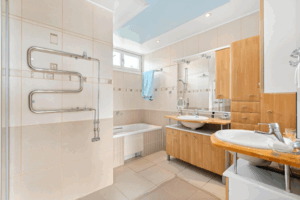
It’s important to select the best roofing for your home and building if you live in an area that experiences extreme weather conditions.
However, not all roofs are created equal, and if you choose the wrong type, you could find yourself dealing with water damage and repair bills. In case of water damage, it is best to call a water damage restoration team to help you.
Water damage restoration companies know the ins and outs of water damage, from start to finish. They are experts at water extraction, drying, and repair.
There’s no doubt about it, extreme climate can take a toll on your roof. If you’re not careful, you may find yourself with a leaky roof and all the hassle that comes with it. So, what’s the best way to protect your roof from the ravages of extreme weather? Read on to find out the advice from a nearby roofer and commercial roofing contractor.
Why is Roofing Important for Extreme Weather?
A professional roofer from DGM Roofing services explained that the roofing system is the first line of defense for any homes. It prevents rain, wind, snow, and other elements from getting into your attic or walls. If water makes its way into those regions, it can damage ceilings, floors, insulation materials, and more. For the best roofing services in San Antonio, work with one of the few Master Elite roofers serving the area.
Water can also cause mold to grow, leading to structural damage down the road. Mold is just one of the potential health risks you face when your roof is compromised.
All this can lead to higher energy bills, as well. Proper roofing is key if you want to keep your home comfortable and reduce your heating and cooling costs. Choose the best material based on the size of your house, budget, and exact weather conditions you face throughout the year. If you’re looking for a roofing company in Travelers Rest, SC to replace your roof, you may want to consider calling Beemer KangaRoof.
Slate
It’s no secret that slate roofs are one of the most durable options when it comes to extreme weather conditions. They have been used for centuries and have stood the test of time, as evidenced by the many buildings that still feature their original slate roofs. Contractors who specialize in roofing and offer residential storm damage info & tips often recommend slate as a roofing material due to its strength and longevity. Additionally, slate comes in a variety of colors, making it a versatile option for any architectural style. With proper maintenance, a slate roof can last anywhere from 50 to 100 years.
There are a few drawbacks to slate roofs, especially if your area has lots of large trees. The leaves can become a problem, requiring tedious cleanups and the need to have them removed periodically, so they don’t damage your roof.
Look into installing a slate roof if it often snows where you live. While other types of roofing can weaken and wear out over time, slate roofs are resistant to the elements. The only drawback is that it’s on the more expensive side.
Metal Panels
You’ll want to look into metal roofing if you’re after a good option for extreme climates. This is ideal if you’re in an area where there’s a great deal of rain, snow, severe weather, or high winds. While these are pretty hefty and tough roofs, they still can’t hold up against hurricanes or earthquakes. Your best bet is to have them installed on a second floor, so you’ll be protected if they fall. These may be a bit tricky to install, so it’s best to have professionals like those at a roofing company in North Atlanta, GA install them.
Metal roofs are made out of various types of metal, so you’ll need to take some time when shopping around to see which type best suits your needs. You want to look for something that’s strong, durable and has the right amount of insulation value. Incorporating metal building insulation can significantly enhance the thermal efficiency of metal roofs, providing better temperature regulation and energy savings. If you need to get rid of the old insulations to install a new better one, hire service for professional removal of insulation by our specialists.
Fiberglass Asphalt Shingles
If you’re looking for the best roofing for extreme weather in terms of affordability, fiberglass asphalt shingles are probably your best bet. Higher grades of this option offer better protection than lower ones, so be sure to read reviews before settling on one type.
Asphalt shingles are lightweight and easy to install, which is an added benefit. The major drawback is that they’re known to dry out and crack over time. However, this only becomes an issue if you’re in an area where the temperatures are always high, and it doesn’t consistently rain or snow.
Cement “S” Tiles
These tiles are among the best roofing for extreme climates because they’re lightweight and easy to install. They also come in various shades, so you can choose a cool color to block the sun.
The drawback is that they’re not ideal in areas where it rains or snows frequently. These are more suitable for areas where the weather is hot and sunny because water can cause damage when it seeps into the cracks rather than running off the surface of the tile. If you are considering this roofing material, professional roofers from roeslersroofingandremodeling.com can provide more information.
Clay “S” Tiles
These tiles are fairly lightweight yet able to withstand tough conditions. They’re also ideal if you live where it doesn’t get too hot or cold for extended periods because they don’t expand or contract as much as other types of roofing.
They can handle harsh weather but not for too long. And, they’re stylish and easy to match with the rest of the exterior. The downside is that they’re on the more expensive end of the spectrum. But these tiles are often worth it if you’re dealing with harsh weather at least once a year. If you need a roof replacement, you can call local contractors like Division Kangaroof.






Your post covered all the essential questions, which sound excellent and informative. Keep posting good stuff!